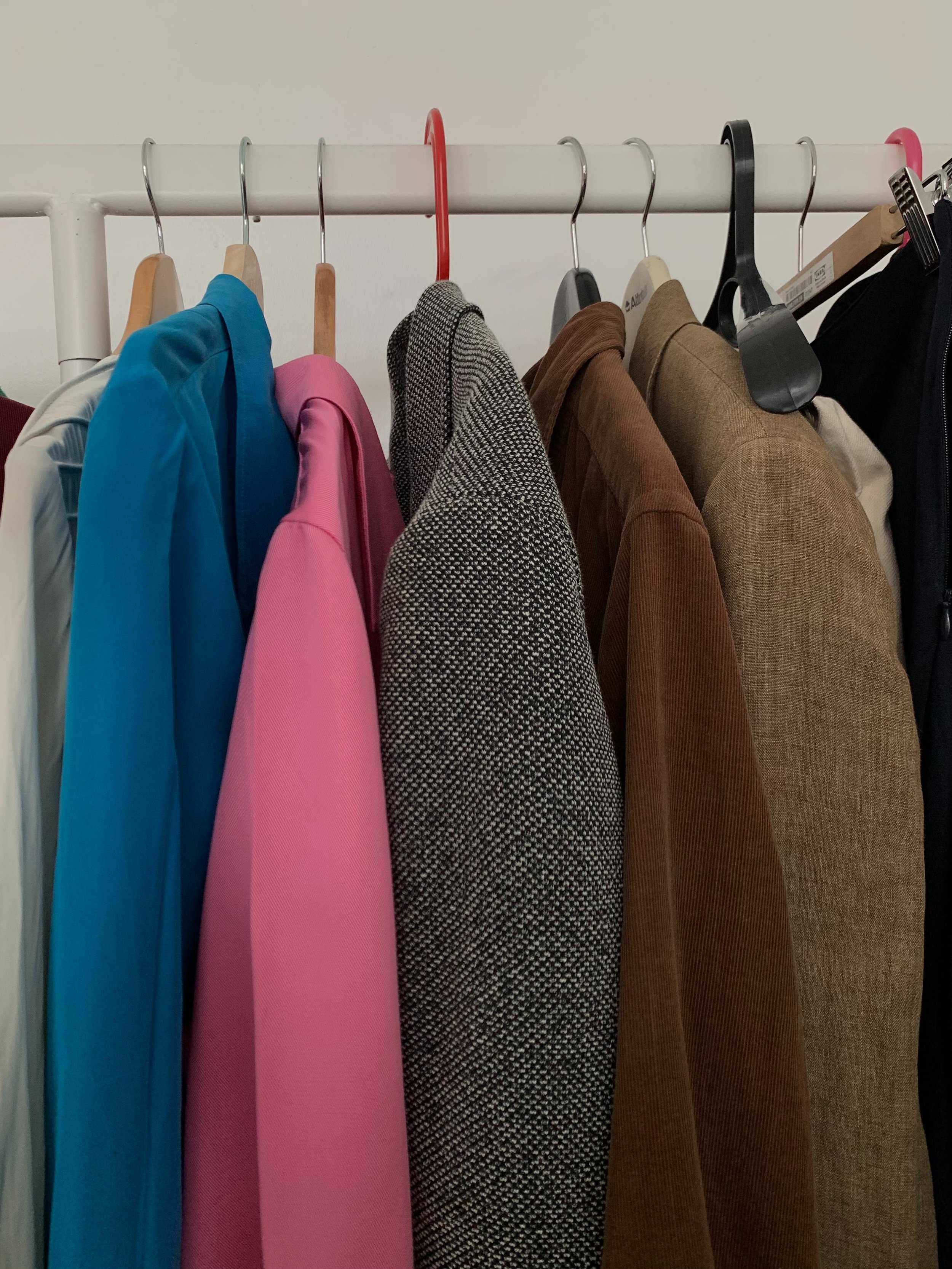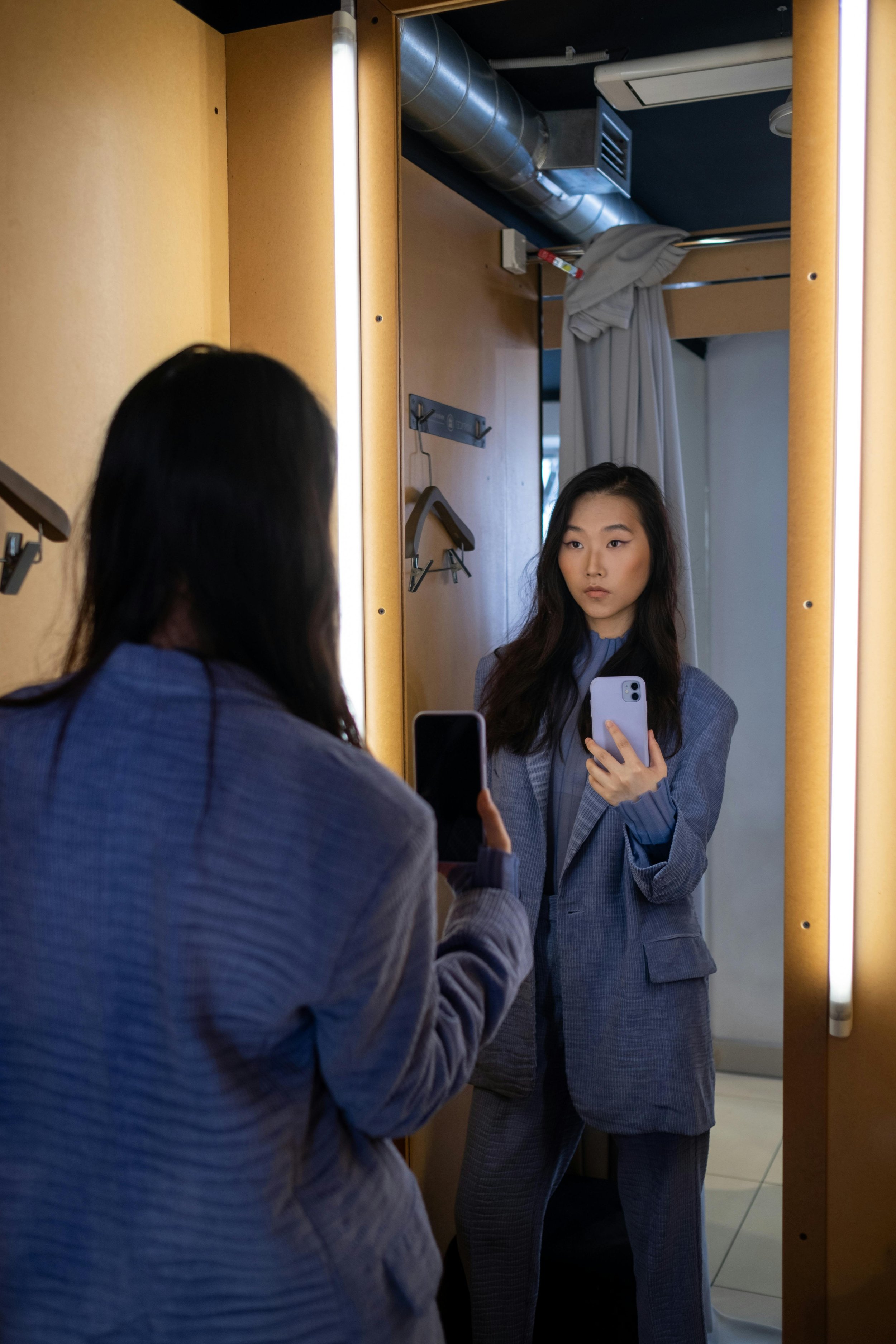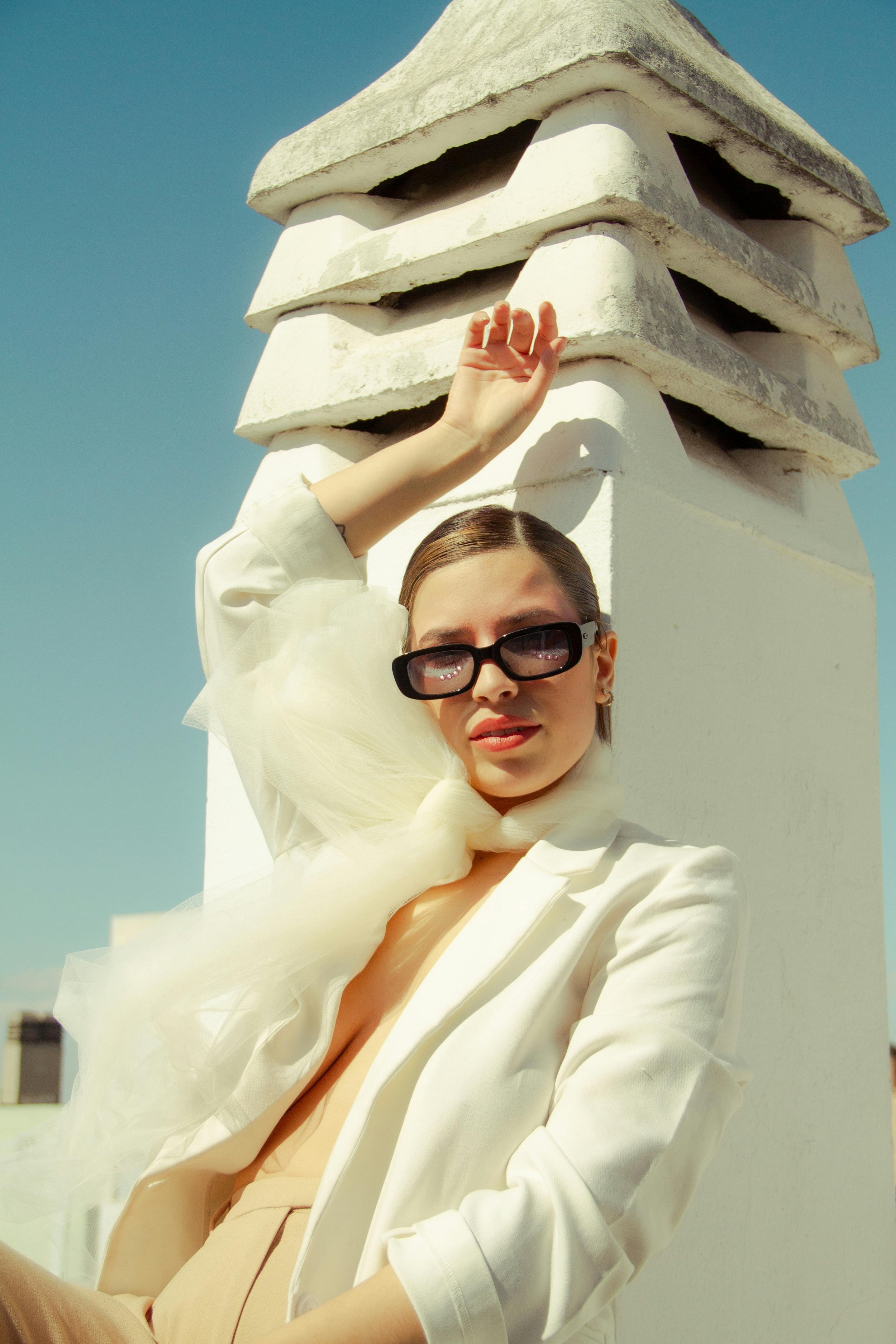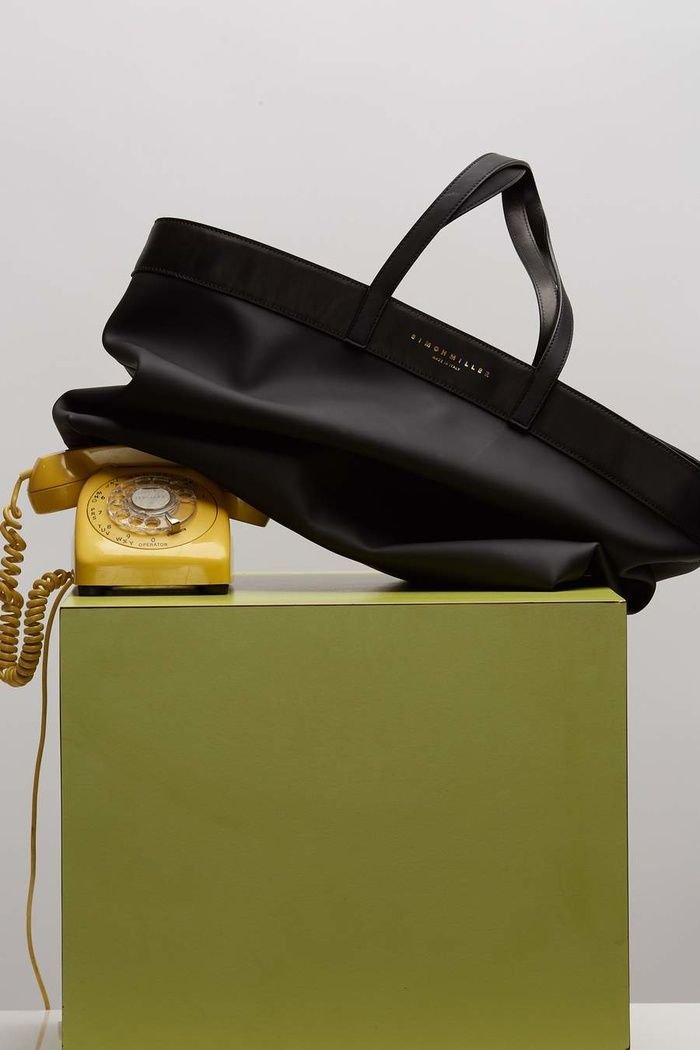When Fashion Becomes Protest, Women Do It Best
In our collective flurry of excitement to follow the latest trends and micro-trends, it is easy to forget that fashion can have much deeper meaning. Not to get too philosophical on you, but it really is one of humanity’s greatest tools of identity and self-expression. There isn’t much that all of mankind has in common - but one of those commonalities is that we all wear clothes.
And as long as we’ve worn clothes, those sartorial choices have served as an indicator of wealth, status - and also allegiance.
If you look closely, fashion has served a key role in countless political movements. As a tool of resistance, certain sartorial choices can express an unspoken act of dissent and serve as an important unifying force.
Fashion as a tool of protest becomes particularly juicy when wielded by women. When societal standards of “appropriate” behavior and dress are set by men, fashion becomes a rich target for politically engaged women to highlight their oppression.
In honor of Women’s History Month, we’re celebrating seven examples of how courageous women have used fashion as a tool in protest.
From the mini-skirt pushing the boundaries of feminine sexuality to working women adopting the three “Ps” of pants, pinstripes and pockets to appear more like men, we certainly have one consistent thread: women making progress despite the indignant outrage of men.
1. The Women’s Suffrage Movement
The women’s suffrage movement of the early 20th century, which aimed to secure voting rights for women, is a very clear and famous example of women using fashion as a tool in their political movement. In 1908, suffragettes in Britain adopted purple, white, and green as their official colors, each with a specific symbolic meaning: purple for loyalty, green for hope, and white for moral purity. In the American movement, green was later swapped out for gold to give organizations across the pond their own distinct identity.
These colors allowed suffragettes to visually identify themselves - and through extension, their cause. It also served to create a greater sense of unity amongst women of different backgrounds coming together around a common cause.
While the movement adopted three colors, white was elevated to particular importance. First, because white is traditionally associated with chastity and purity, its use by the suffragette movement was somewhat subversive - it helped the movement present themselves visually as respectable and dignified while also very much using their voices in protest, which was seen as very undignified thing for women to do at the time.
American Suffragettes at the Capitol in 1914, wearing sashes of purple, white & gold. Harris & Ewing /Library of Congress
White clothing was also relatively affordable as compared to fabrics in other colors which meant that women of all class backgrounds could have access to clothing that identified them as part of the movement. This may sound trivial, but remember that class divides were stark during this period - women from different socioeconomic backgrounds lived and socialized in their own respective circles, and most women identified much more closely with their class rather than their gender. The suffragette movement was an important moment where this barrier was (somewhat) broken down to rally around a common cause that affected all women.
And finally, it just made for good photos! Especially in black-and-white media, a group of women in all white, surrounded by onlooking crowds of men in dark suits was a powerful visual and the leaders of the movement knew it.
Suffragette’s demonstration in 1918, standing out from the dark-clothed crowd in “suffragette white”. Harris & Ewing / Library of Congress
The feminist symbolism of “suffragette white” has sustained over the years. In 1968, Shirley Chisholm wore white as the first Black woman elected to Congress. In 2016, Hilary Clinton wore white while accepting the Democratic presidential nomination and to the last presidential debate. And in 2019, Alexandria Ocasio-Cortez wore white to be sworn in as the youngest woman elected to Congress, saying:
“I wore all white today to honor the women who paved the path before me, and for all the women yet to come. From suffragettes to Shirley Chisholm, I wouldn’t be here if it wasn’t for the mothers of the movement.”
2. The Mini Skirt
While the mini-skirt was not as codified a ‘uniform’ for second wave feminists as suffragette white was for first wave, it nonetheless became an important symbol in the 1960s as a symbol of liberation and rejection of traditional gender roles.
Debuted in 1964 in London by Mary Quant, the mini skirt quickly became a cultural flash-point. Proponents argued that the mini skirt was a powerful way for women to reclaim their bodies, pushing back against the notion that women should be modest and conform to strictly policed dress codes.
The mini skirt rose to particular prominence in the French student and worker protests of May 1968, worn by many protesters as a further symbol of revolution and defiance - and cementing its place as a form of fashion protest for women.
AP Images
3. The Miss America Protest of 1968
Later that same year in 1968, the Miss America Protest on the Atlantic City boardwalk became an iconic moment for second wave feminists - less for the fashion they adopted, but more for the fashions they rejected.
Organized by New York Radical Women and Women’s Liberation, the protest aimed to highlight the objectification of women and the restrictive beauty standards perpetuated by the pageant.
As its centerpiece, protesters threw items associated with traditional femininity (think: bras, high heels, lipstick and girdles) into a "Freedom Trash Can" to symbolize their rejection of oppressive beauty standards.
Bev Grant / Getty Images
This powerful symbol attracted significant media attention, sparking a national conversation about the role of women in society - and honored with being the originator of the term “bra-burning feminists” despite no bras *actually* being burned in that Freedom Trash Can. Organizer Carol Hanisch later said “we had intended to burn it, but the police department, since we were on the boardwalk, wouldn’t let us do the burning.” Such a missed opportunity!
4. The Natural Hair Movement
The first wave of the natural hair movement - which is still very active today - emerged during the obviously tumultuous 1960s in conjunction with the Civil Rights Movement.
Activists Angela Davis, Nina Simone, and many others wore afros and other natural hairstyles as a symbol of Black power and rebellion against White American standards of beauty. This unfortunately remained for many a radical thing to do - with countless lawsuits through the 80s & 90s, and straight through to today challenging dress codes that banned natural hairstyles like afros, braids, locs, and cornrows.
New York Committee to Free Angela Davis, 1971 / Library of Congress
The role of natural hair in Black culture and its general rejection by White society has a long and complicated history that I am not fully equipped to discuss in its full depth. If you’re looking to read more on the topic, I’d recommend checking out the following articles as a place to start scratching the surface:
My black hair: a tangled story of race and politics in America by Marita Golden
A Brief History of Black Hair, Politics, and Discrimination by Jameelah Nasheed
The Joy of Black Hair by Sandra E. Garcia
5. 1970s & 80s Workwear Power Dressing
Let’s say that our relationship with workwear over the years has been…complicated.
In order to work side-by-side with men in the workplace in the 1950s and 60s, women had to stay relatively inconspicuous. The sensitive beings they are, men were also anxious about holding onto their status in the workplace - and so, norms for women who entered the workplace were generally to be “othered” from men, keeping women’s workwear quite feminine. Picture Peggy from Mad Men in dresses and stockings, high heels, and pussybow necklines - and never pants. And like Peggy, women tended to be relegated to lower status roles in service of men, like secretaries and typists.
Many women in the 1970s began to question these assumptions, asserting that perhaps the best way to achieve the status of men in the workplace was to…start dressing more like men! They encouraged the “three Ps”: pants, pinstripes, and pockets.
Men reacted (unsurprisingly) poorly. In 1972, CBS Evening News anchor Walter Cronkite expressed his disapproval on the air, saying “The pantsuit, as it’s called, is a thing that flatters a woman’s figure about as much as a gunnysack”. In 1971, Johnny Carson made a “joke” about women wearing pantsuits, saying “You know what I like about seeing women in pantsuits? It’s like seeing a dog walk on its hind legs”.
Many schools and workplaces imposed dress codes during this period requiring women to wear skirts or dresses rather than pants - and students or employees who violated the dress code by wearing pants were sent home to change or subject to disciplinary action. Shockingly, the Congressional dress code did not allow pants for women until 1993!
While power dressing helped many women enter male-dominated professional spaces in the 70s and 80s, a counter-movement soon erupted, making the point that as dressing like men isn’t so much creating equality for women but assimilating into male ideas of respectability.
We have since seen a period of “taking back”, with women embracing individuality to make their own decisions in dress - whether that is to wear a strong power suit or a frilly floral frock.
6. 2017 Women’s March
As a very recent example, the Women’s March certainly adopted specific fashions as a means of expression and solidarity. One of the most striking statements at the Women’s March was the “pussyhat”, a pink knitted hat with cat ears that became a ubiquitous symbol of the moment.
Women’s March on Washington, 2017 / Library of Congress
The pussyhat was created as an irreverent response to Trump’s infamous “grab ‘em by the pussy” comments, and served as a way for the women involved to reclaim the statement. The knitted hats took on extra significance as kitting and other textile arts are so connected to the history of women’s domestic labor.
By wearing the pussyhat, demonstrators communicated their opposition to Trump’s misogynistic rhetoric, but also created a visible identifier of community and solidarity among participants.
Cringe or not, it was a moment.
7. Jane Fonda’s Fire Drill Fridays
While our other examples are of fashion being adopted as a tool by a movement, we can’t resist sharing Jane Fonda’s individual use of fashion as a moment towards an important cause.
In 2019, Jane Fonda participated in so-called “Fire Drill Fridays” in Washington D.C. as weekly protest against our lack of action against climate change, inspired by Greta Thunberg’s call to act like “our house is on fire”.
Her outfit choice for these occasions? The same iconic red coat, relevant for multiple reasons. First, as a play against the idea of a “fire drill” - and, similar to the suffragettes using white to stand out in black-and-white media, because red is so attention-grabbing in color media. And attention it did grab, with memorable images of her being arrested for civil disobedience in her red coat grabbing media coverage coast-to-coast.
John Lamparski / Getty Images
She is certainly a woman after our own hearts, further proclaiming that the red coat is “ …the last thing I will buy. I bought this on sale because I needed something red. And I’m not going to buy anything more.” Sagely relating her fight against climate change to consumerism and overconsumption, she notes ”I’m speaking out against consumerism and so I have to walk the talk.”
Devon is a co-founder of Indyx and currently leads Growth for the company from San Francisco. She enjoys admiring other people’s gardens and sleeping in with her French Bulldog, Reggie.


































